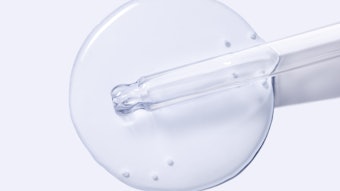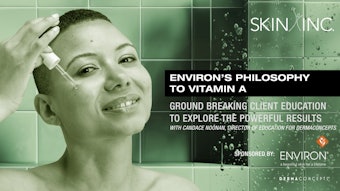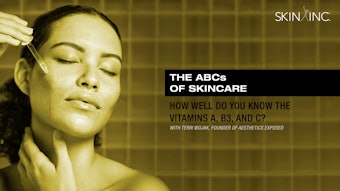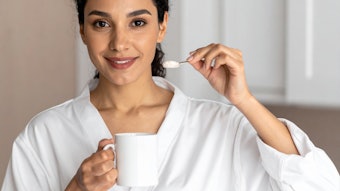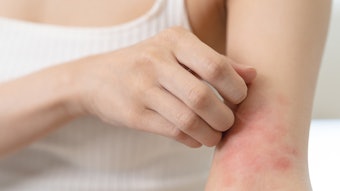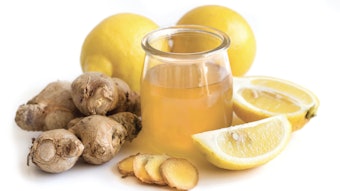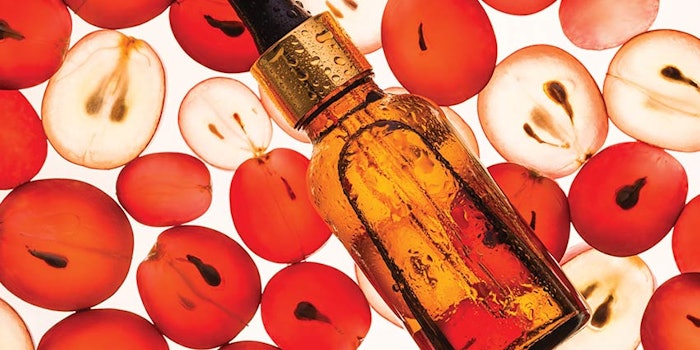
As professional skin therapists, we are all too familiar with the typical signs of aging on the skin. From uneven skin tone to changes in skin turgor, firmness and strength to broken capillaries, skin roughness and texture, there’s a lot not to love about what chronological aging and environmental damage can do to the skin! In fact, we know that 80% of what we see on adult skin is a result of cumulative daylight exposure. The importance of regular professional skin services coupled with a consistent skin care regimen that includes the daily use of SPF is an everyday discussion with our clients, friends and family and let’s be real, even complete strangers if they’ll listen!
As important as SPF, however, is a healthy dose of antioxidant skin support to minimize damage from UV, invisible light, pollutants and chemicals. Sunscreens protect against harmful rays through absorbing or reflecting light, but we know that achieving 100% UV protection 100% of the time is practically impossible. Light exposure, along with other damaging factors, like city air, poor diet, cigarette smoke, elevated stress levels and inflammation, expose the skin to a considerable amount of free radical damage daily, negatively impacting skin structure and impairing skin function. When an overload of free radicals cannot be effectively neutralized, their accumulation in the skin produces a phenomenon called oxidative stress.
Oxidative Stress
We all understand and have used the “sliced apple turning brown due to oxidation” analogy with our clients to help them to appreciate the mechanism of oxidation caused by reactive oxygen species (ROS). To review, free radicals are unstable molecules that have one or more unpaired electrons and to gain stability, they react with other molecules and strip an electron to become balanced, triggering a chain reaction that damages healthy cells and destroys vital proteins. Our bodies naturally produce free radicals, but they can also come from exposure to environmental factors.
Once an overload of free radicals is present in our skin or system, it causes oxidative stress, or an imbalance between the production of free radicals and the ability of the body to counteract or detoxify their harmful effects. Fortunately, studies have shown that the inclusion of antioxidants in your skin care regimen can help your skin fight free radical damage and recover from oxidative stress.
Antioxidants and their stabilizing ingredients protect skin from damage by neutralizing free radicals, help combat visible signs of aging and calm skin inflammation while supporting ATP production. In short, antioxidants are damage defenders that help slow skin aging—and they deserve a place in every service and skin care routine.
Antioxidant Skin Benefits
Antioxidants have an abundance of skin benefits, including: ROS scavenging, reducing inflammation, brightening skin tone and repairing skin.
ROS scavenger. Oxidative stress breaks down collagen, impedes the skin’s natural repair process and triggers inflammation resulting in visible signs of aging like fine lines, wrinkles, crepe-y loose skin and irregular skin tone. By scavenging free radicals, antioxidants can help prevent and correct these visual manifestations.
Anti-inflammatory. All antioxidants have anti-inflammatory properties. They help block your skin’s inflammatory response, preventing sunburn and providing enhanced protection against sun damage and photoaging.
Brighten skin tone. We all understand the mechanism of how melanin is triggered in the skin. ROS and frequent sun exposure triggers production that can result in irregular production of melanin causing hyper or hypo pigmentation and uneven skin tone. By reducing photodamage, antioxidants like vitamin C and its derivatives can help normalize melanin production by inhibiting tyrosinase, the enzyme that stimulates melanin production.
Skin Repair. Antioxidants help skin repair itself. When inflammation is caused, the skin’s repair process is impeded. By reducing inflammation, antioxidants allow skin to repair more effectively while also correcting visible damage.
Common Skin Care Antioxidants
Vitamin A. Also known as retinol, this vitamin is a potent antioxidant that can help fight environmental factors. Vitamin A can help reduce the effects of ultraviolet rays by supporting your body’s natural production of collagen. It’s recognized to increase epidermal thickness and elasticity to reduce fine lines, improve hyperpigmentation and improve skin texture. Retinyl palmitate and retinyl acetate are the most common ester forms of vitamin A. They function primarily as antioxidants in skin care products. Both are converted to retinol inside skin. These ester forms are weaker than retinol but less irritating. Retinyl palmitate makes up about 80% of the vitamin A in skin. The body stores vitamin A in this form. Retinaldehyde (or Retinal) is the aldehyde form of vitamin A. It is a transitional form of vitamin A (when Retinol is converted into Retinoic Acid).Look for: Retinol, Retinyl Palmitate, Retinyl Acetate, Retinaldehyde
Vitamin C. Vitamin C (ascorbic acid) is another powerful antioxidant that is great for skin cells. Like other antioxidants, it helps to protect the skin from UV damage. It also has moisturizing (increases ceramides) and skin-brightening properties (tyrosinase inhibitor) and is recognized as a key ingredient for increasing collagen formation and fortifying skin tissues and blood vessels. Vitamin C is an essential and important antioxidant that you should incorporate into your client’s skin care routine. Our bodies do not naturally synthesize it, and as it has a very short period of activity, it must be replenished daily, both nutritionally and topically. It complements the abilities of vitamin E, as vitamin E becomes inactive after neutralizing a single free radical. Vitamin C regenerates vitamin E, by converting the inactive vitamin E back into an active antioxidant form. The guys are like Batman and Robin; look for them together in a product!
Look for: Ascorbic acid, L- Ascorbic acid, Ascorbyl Glucoside, Ascorbyl Palmitate, Sodium Ascorbatex Sodium Ascorbyl Phosphate, Magnesium Ascorbyl Phosphate (MAP), Tetrahexyldecyl Ascorbate (THDA)
Vitamin E. Like Vitamin C, vitamin E is an important antioxidant. It helps to reduce transepidermal water loss and helps protect the skin’s lipid bilayers from oxidation. When these lipids are attacked, the skin’s barrier function weakens, making skin more vulnerable to dehydration and irritation. Vitamin E is an oil- soluble vitamin and is not a single vitamin. It’s actually a group of molecules that have similar structures. Alpha tocopherol is the most widely studied. Cosmetics often use the esters of tocopherols, because alpha tocopherol is very unstable and poorly transported into the skin.
Look for: Tocopheryl Acetate, Tocopheryl Glucoside, Tocopheryl Linoleate, Tocopheryl Oleate Tocopheryl Succinate, Potassium Ascorbyl Tocopheryl Phosphate, Sodium Tocopheryl Phosphat Tocopherol Phosphate Mitochondrial Aging
We understand that while intrinsic aging is defined by our ancestry and DNA, extrinsic aging is a result of lifestyle and environmental factors. “Premature” aging is when extrinsic aging factors accelerate cellular degradation, and it accounts for the majority of physiological aging signs witnessed on the skin. Beyond antioxidants, another skin aging factor is related to mitochondrial respiration levels (a.k.a cellular energy production), which is now widely understood as the key indicator of longevity and proper function of every part of the body, including the skin.
One of the most exciting breakthrough ingredients to address cellular energy is ergothioneine. This amino acid found in mushrooms and wheat germ is a unique broad-spectrum antioxidant that protects mitochondria from free radicals. Researchers studying the biochemistry of aging now believe the process begins within mitochondria when these cellular bodies process oxygen into ATP. Ergothioneine protects the structures within mitochondria from attack by oxygen radicals that are created when ATP is produced. So important is the interaction of mitochondria and ergothioneine to sustaining life, mitochondria have developed special ducts in their protective walls dedicated to receiving only ergothioneine. In various laboratory tests comparing ergothioneine to popular antioxidants, ergothioneine consistently performs better than members of the vitamin C family. It also recycles vitamin C like vitamin E. It is recognized to outperform coffeeberry, idenbenone, CoQ10, vitamin C and others in free radical scavenging trials.
Another consideration is Vitacell, which is derived from Saccharomyces cerevisiae (yeast). It’s rich in amino acids and peptides and helps to address environmental assault, boost skin revitalization and regenerate skin energy (ATP) by activating enzymes in the bio-energetic pathways. It helps to eliminate cellular toxins, activate intracellular exchanges and neutralize environmental pollutants. It’s an ideal cosmeceutical ingredient for dull, tired skin.
Delivering Antioxidants through Services and Homecare
As skin professionals, it’s hard to pick a favorite antioxidant. The good news is you don’t have to, as they all have such incredible skin benefits that are even more powerful when combined in a comprehensive cocktail. Look to include antioxidants in every step of your professional skin service from cleansers, exfoliants and aquafuse toners used with your wet/dry microdermabrasion, there are many ways to incorporate their effects. Infuse vitamin, peptide packed serums, ampoules and sheet masques specifically with ATP boosting technology like microcurrent, combined with texture improvements made nano tip microexfoliation and wet/dry microdermabrasion for dramatic skin improvements and results. Always finish with eye care, moisturizers and a minimum SPF30 before your client is exposed and back out in the environment.
In addition to sending your client home with their own protective shield of products to quench ROS at every opportunity, introduce them to at-home, handheld tools. Professional grade cleansing tools dislodge dirt, pollutants and debris while optimizing the performance of cleansers and exfoliants. They help the client more effectively exfoliate and deeply apply their recommended homecare products. Introduce and teach your client how to use an ultrasonic applicator and on the various modes from exfoliation for safe at home extractions. They can also use the apply function for the increased delivery of their serums, masques and moisturizers.
With all skin service and at homecare regimens, consistency and education is key. If weekly, bi-weekly or monthly visits are not realistic for your client right now, FaceTime, Zoom or just call to check in with them weekly anyway to review progress, answer questions and coach them along. The past couple of years have led to a much greater appreciation for human connection, and this is one area where professional skin therapists will always shine.
Annet King is vice president of business development for Bio-Therapeutic. She served as the senior director of global education at Dermalogica for 19 years and most recently as the vice president of global education for Elemis.




